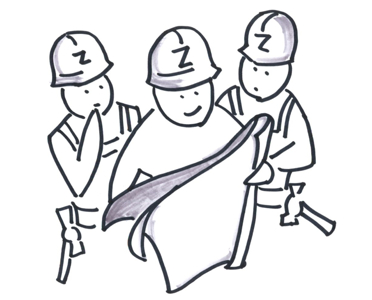We've been talking a lot about story lately, both on this blog and around the office. What makes for a compelling story? Are we even telling the right kind of story? These are some of the questions we ask each day. Building a compelling story is essential and, as Forrest highlighted recently, can help you survive a design change.

And we all know the consequences if we get it wrong. Look at Facebook. How many times has the social network faced backlash from its users? Most recently, users had a conniption over having "timeline" forced upon them. To be fair, there may not be anything Facebook could say or do with the recent charge that the social network is posting private messages on people's timelines. That one may just boil down to users not remembering that they aired their dirty laundry for all to see, as Business Insider points out.
While there may not be anything Facebook can do about that, they might have been able to stave off any backlash had they told a strong story about the "timeline." Not that they didn't try, selling it as a person's visual life story. But they were still called out by The Next Web for what it really is — a repository for your personal data, maybe the biggest one around and one we freely add to.
Facebook aside, what does it take to tell a compelling story? Let's take a journalistic approach, answering a few of the 5 w's. In this case, who, what and why.
Who is Your Audience
First and foremost, who is it that you're telling your story to. Who is it that your story affects. When it came to our free app Plunk, we used visual design to communicate its story. To do that, we asked ourselves how would an app developer feel about the visual design, especially if they were using the apps to test their mobile designs.
Another way to think of it: who is it that's actually going to use your product.
What is the Problem You're Solving
Part of getting your story straight is understanding the problem you're trying to solve. Are you meeting a specific need in the market? It's important to consider whether your product bridges the gap in a market/user fit problem. More than that does it align with your vision or mission as well as solve a problem. And if it isn't, then it might be time to reevaluate what you're doing.
We once had to toss out some of our work on Scrumptious, a task-management app that got cannibalized into Strike. That's because we'd been trying to build what we thought people wanted, not an app that helped them work better or design better. After all, our mission is to help people design great products faster. Scrumptious, at the time, wasn't aligned with that mission nor was it solving a problem.
Why You're Doing What You're Doing
Which brings us to why. We firmly believe in asking why repeatedly. Asking why five times helps us to figure out the root cause of problems and how people are actually using our products. It also forces us to challenge our assumptions and ensure that we're still on course.
Ask why to figure out why you're doing what you're doing. This helps give your story (and your work) a theme to drive it. Consider it a thesis. Better still, consider it a mission statement. Our mantra of helping people design for people drives what we do. It frames our approach to product design. It makes us consider the story we're telling and if we're actually telling it well.
Without an audience, without knowing what you're solving and without knowing why you're doing what you're doing, your story will fall apart. The more you examine those things, the better your story will be.